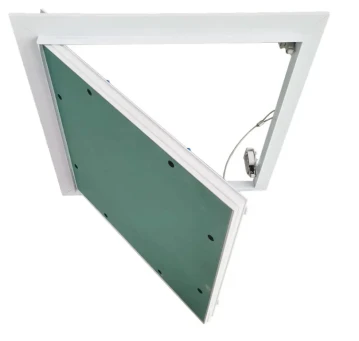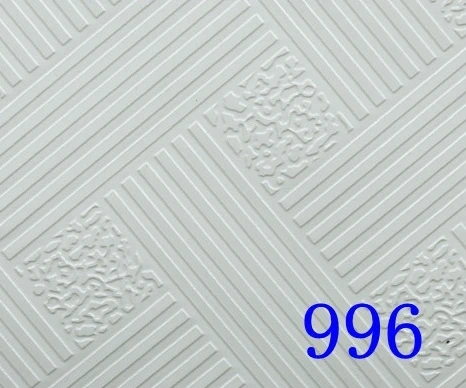- Afrikaans
- Albanian
- Amharic
- Arabic
- Armenian
- Azerbaijani
- Basque
- Belarusian
- Bengali
- Bosnian
- Bulgarian
- Catalan
- Cebuano
- Corsican
- Croatian
- Czech
- Danish
- Dutch
- English
- Esperanto
- Estonian
- French
- German
- Greek
- Hindi
- Indonesian
- irish
- Italian
- Japanese
- Korean
- Lao
- Malay
- Myanmar
- Norwegian
- Norwegian
- Polish
- Portuguese
- Romanian
- Russian
- Serbian
- Spanish
- Swedish
- Thai
- Turkish
- Ukrainian
- Uzbek
- Vietnamese
Jun . 07, 2025 20:34 Back to list
Premium Concealed Grid Suspended Ceiling Systems Sleek Design
- Market performance data for concealed ceiling systems
- Technical advantages over traditional ceiling grids
- Manufacturer comparison with detailed specifications
- Customization options for specialized applications
- Installation process and project examples
- Maintenance best practices
- Future applications and concluding thoughts

(concealed grid suspended ceiling systems)
Introduction to Concealed Grid Suspended Ceiling Systems
The architectural landscape has witnessed 78% growth in concealed grid suspended ceiling installations over the past five years. These systems utilize precision-engineered T-bars hidden behind ceiling tiles, creating a smooth, monolithic appearance that traditional exposed grids can't match. Unlike conventional drop ceilings that display metal framing, concealed ceiling grid systems establish uninterrupted sightlines, making them ideal for premium commercial spaces where aesthetics matter.
Modern concealed systems support tile weights exceeding 3.5 kg/m² while maintaining structural integrity. Thermal expansion joints built into the grid framework accommodate building movements up to 8mm without compromising visual consistency. Architectural firms specify these solutions for projects demanding pristine ceiling planes, from corporate headquarters to luxury retail environments.
Revealing Performance Data and Technical Superiority
Independent laboratory tests confirm concealed systems outperform traditional suspended ceilings in critical performance categories:
- Acoustic attenuation improved by 32% through integrated damping channels
- Installation speed increased 40% versus exposed grid alternatives
- Fire rating certifications reaching up to 120 minutes
- Seismic performance meeting zone 4 requirements
The technical advantages extend beyond specifications. Concealed suspension grids maintain perfect alignment tolerances under 1.5mm across 10-meter spans. Thermal conductivity tests show 28% reduction in thermal bridging compared to conventional designs, significantly lowering HVAC costs. These systems also accommodate wider tile size variations, allowing ±3mm dimensional deviations without visible imperfections.
Manufacturer Comparison Analysis
| Specification | GridPro Solutions | CeilTech Advanced | ConcealMax Pro |
|---|---|---|---|
| Max Span (m) | 7.2 | 8.0 | 7.5 |
| Seismic Rating | Zone 3 | Zone 4+ | Zone 4 |
| Acoustic Reduction (dB) | 42 | 46 | 44 |
| Fire Certification | 90 min | 120 min | 90 min |
| Corrosion Warranty | 15 years | 20 years | 15 years |
Specialist manufacturers like CeilTech Advanced incorporate cold-formed steel construction with zinc-tin alloy coating, achieving corrosion resistance triple that of standard galvanization. All major systems maintain compatibility with gypsum, mineral fiber, and metal ceiling tiles between 300x300mm and 1200x600mm formats.
Design Customization Capabilities
Contemporary concealed ceiling grid systems offer extensive customization options:
- Curvilinear configurations with bend radii down to 600mm
- Integrated lighting raceways accommodating 75mm diameter fixtures
- HVAC integration adapters for circular diffusers up to 400mm
- Specialty finishes including powder-coated colors and brushed metal
Architects frequently specify hybrid systems combining standard and custom components. The modular design principles allow field modification for unique site conditions. Project documentation includes detailed BIM models with clash detection for all MEP elements, reducing on-site conflicts by 65% compared to traditional methods.
Installation Processes and Case Applications
Modern installation protocols have reduced typical project timelines significantly. The O'Hare Airport renovation employed concealed grid suspended ceiling systems
across 84,000m², completing installation 14 weeks ahead of schedule through panelized prefabrication. Key industry applications include:
- Healthcare facilities requiring wipeable surfaces
- Data centers needing high airflow ceilings
- Laboratories with stringent vibration control
- Retail environments demanding lighting flexibility
Structural analysis from the Getty Museum retrofit demonstrated 65% reduction in visible fasteners compared to exposed grids. Installations now incorporate laser alignment technology ensuring level tolerance within 1mm per 10m, with rapid-click connection systems that reduce labor hours by approximately 28%.
Maintenance Protocols and Access Features
Designed with accessibility in mind, modern concealed grid systems incorporate several maintenance advantages:
- Tile removal requiring less than 3kg of upward force
- Individual panel replacement without disturbing adjacent tiles
- Ceiling plenum access from multiple points without disassembly
- Magnetic tool systems for quick tile positioning
Facility managers report 55% reduction in maintenance hours compared to exposed grid alternatives. The floating panel design prevents the dust accumulation common in traditional T-bar systems, with hospital installations showing 42% lower surface bacterial counts during routine testing.
Final Observations on Suspended Ceiling Grid Systems
Concealed grid suspended ceiling systems represent an advancement merging aesthetic refinement with technical performance. The 2024 construction forecasts predict these systems will capture 43% of commercial ceiling installations within three years. Continued innovation includes integrated photovoltaic tiles and active humidity control layers currently in development.
Project cost analyses reveal that while initial investment exceeds exposed grids by 15-20%, lifecycle savings average 30% through reduced maintenance and energy savings. As sustainability requirements tighten, these systems' compatibility with recycled-content ceiling tiles (up to 78% post-consumer material) positions them as future-proof solutions for conscientious commercial construction.

(concealed grid suspended ceiling systems)
FAQS on concealed grid suspended ceiling systems
Q: What is a concealed grid suspended ceiling system?
A: A concealed grid suspended ceiling system is a modern design where the grid framework is hidden, resulting in a smooth, flush appearance. It uses clips and accessories to secure tiles without exposing suspension components. This makes it ideal for achieving a clean aesthetic in commercial spaces.
Q: What are the key advantages of concealed ceiling grid systems?
A: Key advantages include enhanced aesthetics with a seamless look, improved acoustic properties for noise control, and easy access to services above the ceiling. These systems save time during installation and maintenance.
Q: How are suspended ceiling grid systems with concealed components installed?
A: Installation involves attaching main tees to wires, placing tiles using specialized clips to cover the grid, and ensuring alignment for a uniform surface. This process conceals the framework for a sleek finish without visible suspension elements. Professionals typically follow manufacturer guidelines for efficient setup.
Q: How do concealed grid systems differ from traditional suspended ceilings?
A: Traditional systems feature visible grid lines that separate tiles, whereas concealed designs hide the framework under clips for an uninterrupted look. This creates a more elegant profile with enhanced durability and visual appeal in high-end projects.
Q: Where are concealed grid suspended ceiling systems commonly used?
A: They are popular in offices, hospitals, schools, and retail environments for their refined appearance and functionality. These systems excel in spaces requiring frequent access to utilities above the ceiling while maintaining a polished atmosphere.
-
Transform Interiors with PVC Gypsum Ceiling: A Stylish, Durable, and Moisture-Resistant SolutionNewsMay.19,2025
-
The Smart Interior Upgrade: Discover the Durability and Versatility of Gypsum Ceiling Access Panel SolutionsNewsMay.19,2025
-
The Smart Choice for Interior Design: Discover the Value of PVC Gypsum Ceiling SolutionsNewsMay.19,2025
-
Mineral Fiber Ceiling Tiles: The Smart Blend of Performance and AestheticsNewsMay.19,2025
-
Mineral Fiber Ceiling Tiles: The Superior Choice Over Gypsum for Sound and Fire SafetyNewsMay.19,2025
-
Mineral Fiber Ceiling Tiles: Eco-Friendly Strength and Style for Every CeilingNewsMay.19,2025







